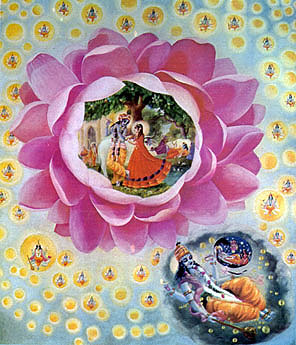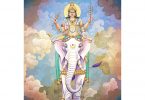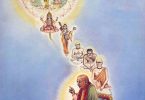Question: Recently I read this quote attributed to Srila Bhaktisiddhanta Saraswati Thakura purported to be published in the Harmonist (Sri Sajjana Tosani, Interview with Professor Johans, head of the Department of Philosophy, St. Xaviers College):
“The bliss available in Ayodhya is better than that in Vaikuntha; the bliss in Dwaraka is superior to that in Ayodhya; and the bliss of the denizens of Goloka is the climax of all bliss. The difference in the degree of a particular Rasa or sentimental mellowness is the cause of the difference in the degree of the bliss. Even the afflictions and distresses that may be there in Goloka dance on the crest of all forms of blisses and happinesses; these are rather nourishers of the highest form of bliss.”
How is this so based on the authority of the puranas? I can understand this point coming from a philosophical predilection, but based on objective interpretation, how can we say that there’s a difference of superiority when one attains the association of the absolute supreme?
Answer by Romapada Swami:
Objectively, or rather in terms of material distinctions, there is no differentiation of inferior and superior in the Absolute realm. And yet there is unlimited variegatedness. Variety is exhibited in different degrees of perfection, i.e there is perfect – more perfect – and most perfect. The implication is that in the relative world, by exalting one object we automatically denigrate another to a lower status as being faulty or lacking in some way, whereas in the Absolute Realm, appreciation of greater perfection does not imply a lack of perfection in another.
Intensity of attraction and affection is exhibited in varying degrees within each rasa, and Krishna is reciprocally respondent to His variegated devotees: thus there are different, ever-increasing levels of loving exchanges and corresponding bliss.
Another aspect of transcendental variegatedness lies in the intimacy of services and loving exchanges, as illustrated in Brhad-Bhagavatamrita. All the different grades of devotees in different Vaikuntha realms indicated in the above quote are fully satisfied in their respective relationships with the Lord of Vaikuntha, according to their individual constitutional rasa. There is no envy, nor is there any tint of dissatisfaction or hankering for achieving a superior position. And yet there is an objective acknowledgment of the greater degree of intimacy and loving exchanges enjoyed by the more confidential devotees.
For example, Hanuman is perfectly satisfied in his relationship with Lord Rama and would not accept any other position, even if it were offered to him. At the same time, he glorifies the uncommon and most confidential pastimes of Krishna and the superior perfection attained by the Pandavas, the intimacy of their service and the Lord’s reciprocation with them. (Sri Brihad Bhagavatamrita, Chapter 4) In the Bhagavatam also we read of the appreciation Queen Kunti and Devaki have for the love of Mother Yashoda, and so on.
The adoration of Krishna’s abode and pastimes by the acharyas in our disciplic line are not entirely built on their predilection towards worship of Krishna. While that is indeed the mood of the followers of Lord Caitanya, it is also based on ample evidences and conclusions supported by shastra. Krishna or Govinda is the fountainhead of all the multi-incarnations, as confirmed in the Bhagavatam, Brahma samhita, as well as other puranas and Upanishads. All the plenary incarnations of the Lord are also equally powerful as He is and yet Krishna is the Primeval person; Brahma Samhita gives the example of many candles lit from one original candle. (Text 46) Narayana is the majestic manifestation of Krishna and all the majestic attributes of Krishna – sixty in number – are fully present in the various incarnations expanding from Narayana. But Lord Krishna or Caitanya Mahaprabhu, as the avatari, possesses special excellences that surpass all others; you may know these four special qualities described in Nectar of Devotion Chapter 21.
This is yet another aspect of transcendental variety exhibited as different features of the Supreme – aishvarya, madhurya and audarya. Krishna’s form, qualities, pastimes etc in Goloka Vrindavan are characterized by intense sweetness (madhurya) that includes, surpasses and overshadows His majesty and opulence (aishvarya) in Vaikuntha, Ayodhya or Dvaraka. We know from the exchange between Lord Caitanya and Vyenkata Bhatta that because of her aishvarya bhava, Lakshmidevi was unable to enter the rasa dance, despite her performing severe austerities for that end, although there is no factual difference between Narayana and Krishna. (Cc Madhya 9.111-138) Similarly, the pastimes of Lord Caitanya manifest unparalleled magnanimity that eclipses His opulences and sweetness, which are also simultaneously present in their fullness in His pastimes.







